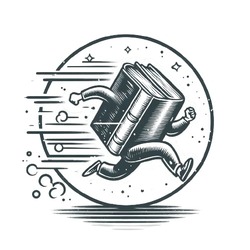One Sentence Summary
A fictional tale depicting an alternate history where Charles Lindbergh becomes president and the rise of anti-Semitism in America, ‘The Plot Against America’ explores the themes of family, identity, and political manipulation.
Book Genre
Historical Fiction
Main Topic of the Book
The main topic of ‘The Plot Against America’ is the impact of political events and rhetoric on the lives of an American Jewish family during the 1940s.
Key Ideas
- Exploration of an alternate history where Charles Lindbergh becomes president and his anti-Semitic policies impact American society
- The effects of political propaganda and fear-mongering on personal relationships and identities
- Examination of the complexities of family dynamics and individual experiences during times of societal turmoil
- The role of media in shaping public opinion and perpetuating harmful ideologies
Main Parts of the Book and a Short Summary
- Part 1: “Fear” – The story begins in 1940 with the election of Charles Lindbergh, a symbol of isolationism and anti-Semitism, as the president of the United States. The perspective shifts between the experiences of the Roth family in Newark, New Jersey, and the growing national tension surrounding Lindbergh’s policies.
- Part 2: “Rally ‘Round the Flag” – After Lindbergh implements a Just Folks program, which sends Jewish children from urban areas to live with Christian families in the Midwest, young Philip Roth is sent to live with the family of local radio host Walter Winchell. As he adjusts to his new surroundings, Philip becomes more aware of the anti-Semitic sentiment in America.
- Part 3: “The Fine Print” – As tensions rise, President Lindbergh signs a treaty with Nazi Germany and institutes policies that further discriminate against Jews. The Roth family struggles with the decision to stay in America or flee to Canada, while Philip’s older brother, Sandy, becomes enamored with the idea of a new society for Jewish people in Kentucky.
- Part 4: “The Un-American” – As the country becomes more divided, Wahlheim, a pro-Lindbergh faction, begins to take over the government. President Lindbergh is inaugurated for a third term, suspending the Constitution and using his power to further oppress Jews. With the help of a fictionalized version of Nazi sympathizer and American hero, Father Coughlin, Lindbergh sets his sights on deporting Jews out of the country.
- Part 5: “Ah, to Be a Refugee!” – Fearful for their safety, the Roths flee to Canada, where they are considered refugees. Philip, now an adult, reflects on his experiences and the lasting impact it has had on his family and his own identity.
Key Takeaways
- The importance of being aware of how political events and discourse can impact society and individual lives
- The power of media and propaganda in shaping public opinion and fueling fear and hatred
- The complexities of family dynamics and the different ways individuals may respond to difficult situations
- The danger of succumbing to prejudice and discrimination, and the value of standing up against injustice
Author’s Background and Qualifications
Philip Roth was an American novelist, best known for his works exploring the complexities of American identity and Jewish-American experiences. His debut novel, ‘Goodbye, Columbus’, won the National Book Award in 1960, and he went on to write numerous highly regarded works, including ‘American Pastoral’ and ‘The Human Stain’. Roth was known for his exploration of controversial themes and his witty, sometimes satirical writing style.
Target Audience
‘The Plot Against America’ is targeted towards readers interested in historical fiction and those curious about exploring alternate histories. It may also appeal to those interested in political and social issues, particularly the impact of political events on individual lives.
Publisher and First Publication Date
‘The Plot Against America’ was published by Houghton Mifflin in 2004.

